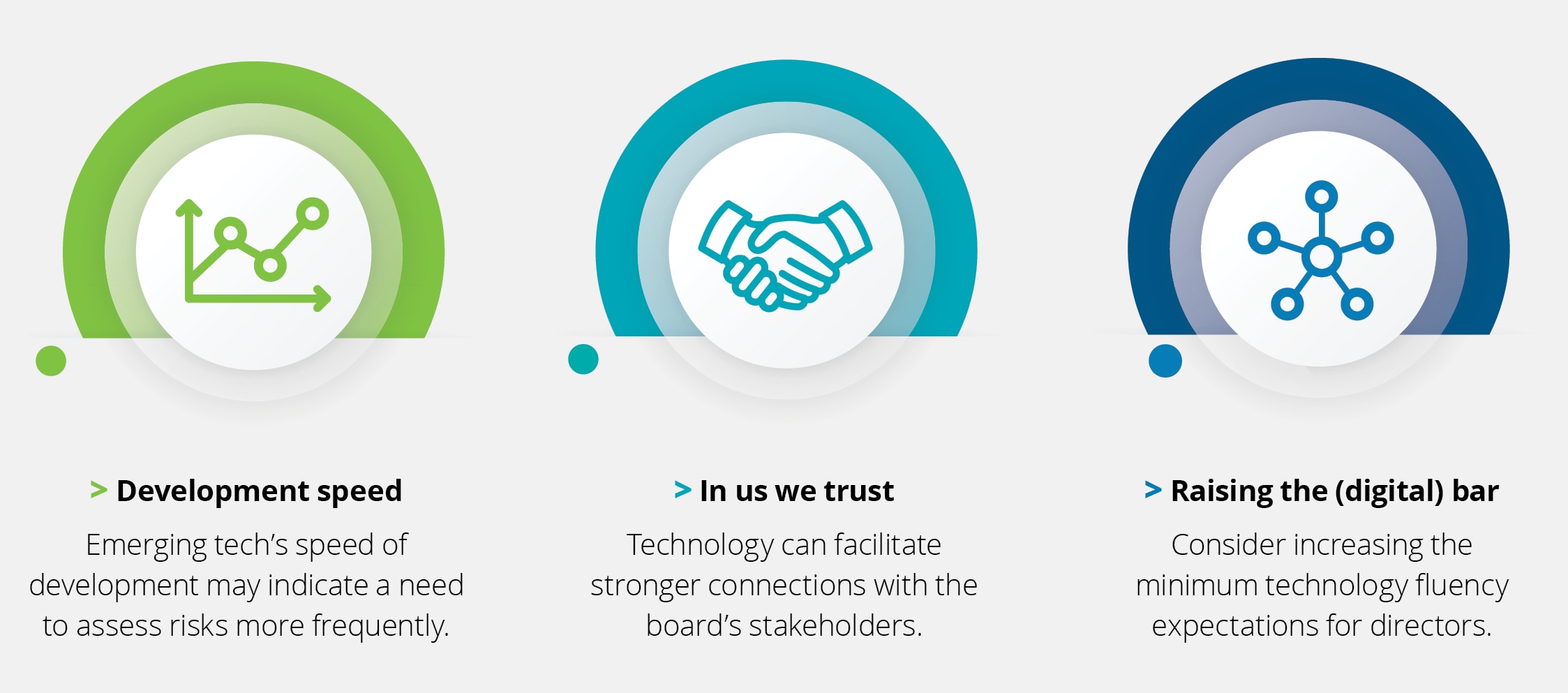Questioning technology governance orthodoxy has been saved

Perspectives
Questioning technology governance orthodoxy
On the board’s agenda, March 2024
By Carey Oven and Mike Bechtel
Why it matters
Formerly a siloed and specialized topic, technology has become interwoven throughout many facets of governance. Yet even for the tech-savvy, strategizing around the increasingly rapid pace of advancement could prove challenging. Deloitte’s Tech Trends 2024 may be useful for boards looking to separate the signal from the noise of current technology dialogues. According to the report, upcoming technology advancements are poised to fundamentally change how humans and machines interact in the workplace (and beyond). The board’s technology oversight processes may (or may not) be prepared for that kind of potential shift. But in either case, there are ways for boards to improve capacity in this area.

The more things change, the more they stay the same
Deloitte has chronicled how the form of the latest “breakthrough” technology changes frequently over time. But while the innovation of the moment is ever-changing, the elevating and grounding forces that drive it remain steadfast. From the design of the very first computer to today’s widespread use of artificial intelligence (AI), Deloitte’s data suggests the progress of interaction, information, and computation have acted as elevating forces that foster technological change over time.1 Grounding these are countervailing factors involving the business of technology, cyber and trust, and core modernization. Taken together, these six macro technology forces can help illuminate the direction of future trends.
The connections between 2024’s technology trends and board oversight, strategy, and governance may seem to echo the 2023 report. But a closer look reveals important nuances—especially in terms of risk and opportunity assessment.2 For instance, the 2023 report noted the emergence of AI—and presciently, the possibilities that lay beneath its computational power.3 As the AI trend has evolved, the focus has shifted in 2024 to its use as a growth catalyst. In other words, technology evolution has led to a potential business revolution.4 The implications for directors could be far-reaching, depending on industry and whether there are existing AI use cases in the organization.5 Comparing the six macro technology forces between the two years reveals a few other differences that may have board implications.

Recommendations
Tech Trends 2024
Deloitte’s 15th Tech Trends report helps business leaders separate signal from noise and use evolving technology as a tool to revolutionize business.
Holistic governance through technology transformation
On the board’s agenda, September 2023




